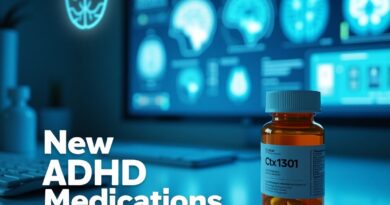ADHD’s Hidden Edge: Creativity in Chaos
ADHD’s Hidden Edge: Creativity in Chaos is often misunderstood. Many see ADHD as a challenge, focusing only on distraction and hyperactivity. But what if the very traits that make ADHD difficult also fuel extraordinary creativity and innovation?
Instead of viewing ADHD as a disorder that hinders productivity, we should explore how it enhances creative thinking. Research suggests that individuals with ADHD excel in divergent thinking, rapid idea generation, and non-linear problem-solving. Their unique cognitive patterns allow them to approach challenges in ways others might not consider.

Research Insights: The Link Between ADHD and Creativity
Studies continue to highlight the connection between ADHD and enhanced creativity. Research from the University of Memphis found that people with ADHD outperform neurotypical individuals in divergent thinking, which involves generating multiple creative solutions to a problem.
A study published in the Journal of Creative Behavior reported that those with ADHD produce more original ideas and engage in broader associative thinking, leading to unique innovations.
According to Dr. Holly White, a neuroscientist,
“People with ADHD explore a broader range of possibilities and come up with unexpected, creative solutions. Their brains are wired for innovation.”
These findings challenge the long-held belief that ADHD only creates obstacles. Instead, ADHD minds demonstrate strong problem-solving skills, increased adaptability, and an ability to think beyond conventional frameworks.
The Creative Brain: How ADHD Enhances Innovation
The ADHD brain functions differently from neurotypical brains in several key ways:
- Nonlinear Thinking: ADHD minds naturally connect unrelated concepts, leading to unique insights.
- Rapid Idea Generation: Thoughts race, producing multiple ideas in quick succession.
- Hyperfocus: While ADHD often causes distractibility, it also enables deep concentration on tasks that spark interest.
Neurodiversity plays a crucial role in fostering innovation. Instead of treating ADHD as a problem, society should recognize it as a different cognitive style that fuels unconventional solutions.
Real-Life Examples: Successful Individuals with ADHD
Many of the world’s most successful innovators, entrepreneurs, and artists credit ADHD for their achievements:
- Richard Branson (Founder of Virgin Group): Branson has stated that his ADHD helped him take risks and develop unconventional business strategies.
- Jim Carrey (Actor & Comedian): Carrey’s high-energy performances reflect ADHD’s natural creativity and spontaneity.
- David Neeleman (Founder of JetBlue Airways): Neeleman believes his ADHD gave him the ability to innovate new airline business models.
These examples prove that ADHD is not a limitation but a unique way of thinking that can drive groundbreaking ideas.
Societal Perceptions: Misunderstanding ADHD’s Strengths
Society often focuses on controlling ADHD rather than harnessing its strengths. Schools, for instance, emphasize discipline and attentiveness instead of encouraging creativity. Workplaces frequently struggle to integrate individuals with non-traditional work styles.
This mindset has major consequences:
- Education: Schools label ADHD students as “disruptive” rather than recognizing their innovative thinking.
- Workplaces: Employers often perceive ADHD traits as obstacles to productivity rather than assets for creative problem-solving.
- Self-Perception: Many individuals with ADHD grow up believing they are “broken” instead of realizing their potential.
By shifting the focus from limiting distractions to cultivating innovation, society can unlock the full potential of ADHD minds.
Fostering Creativity: Maximizing ADHD Strengths
To help ADHD individuals thrive, schools, workplaces, and individuals should leverage their strengths instead of suppressing them.
For Schools:
- Encourage hands-on learning and project-based tasks to engage ADHD students.
- Allow for alternative problem-solving approaches rather than rigid structures.
For Workplaces:
- Offer flexible work environments that cater to different thinking styles.
- Value brainstorming sessions where rapid idea generation shines.
For Individuals with ADHD:
- Use mind-mapping techniques to organize thoughts visually.
- Pursue creative outlets such as music, writing, or entrepreneurship.
- Implement structured spontaneity, balancing freedom with organization.
When ADHD is understood and nurtured, it becomes a powerful force for creativity and innovation.
ADHD is often seen as a challenge, but what if that’s the wrong perspective? Instead of treating ADHD as a problem, we should embrace it as an alternative way of thinking—one that fuels creativity, innovation, and groundbreaking ideas.
Perhaps the very chaos of ADHD is the secret to extraordinary creativity
